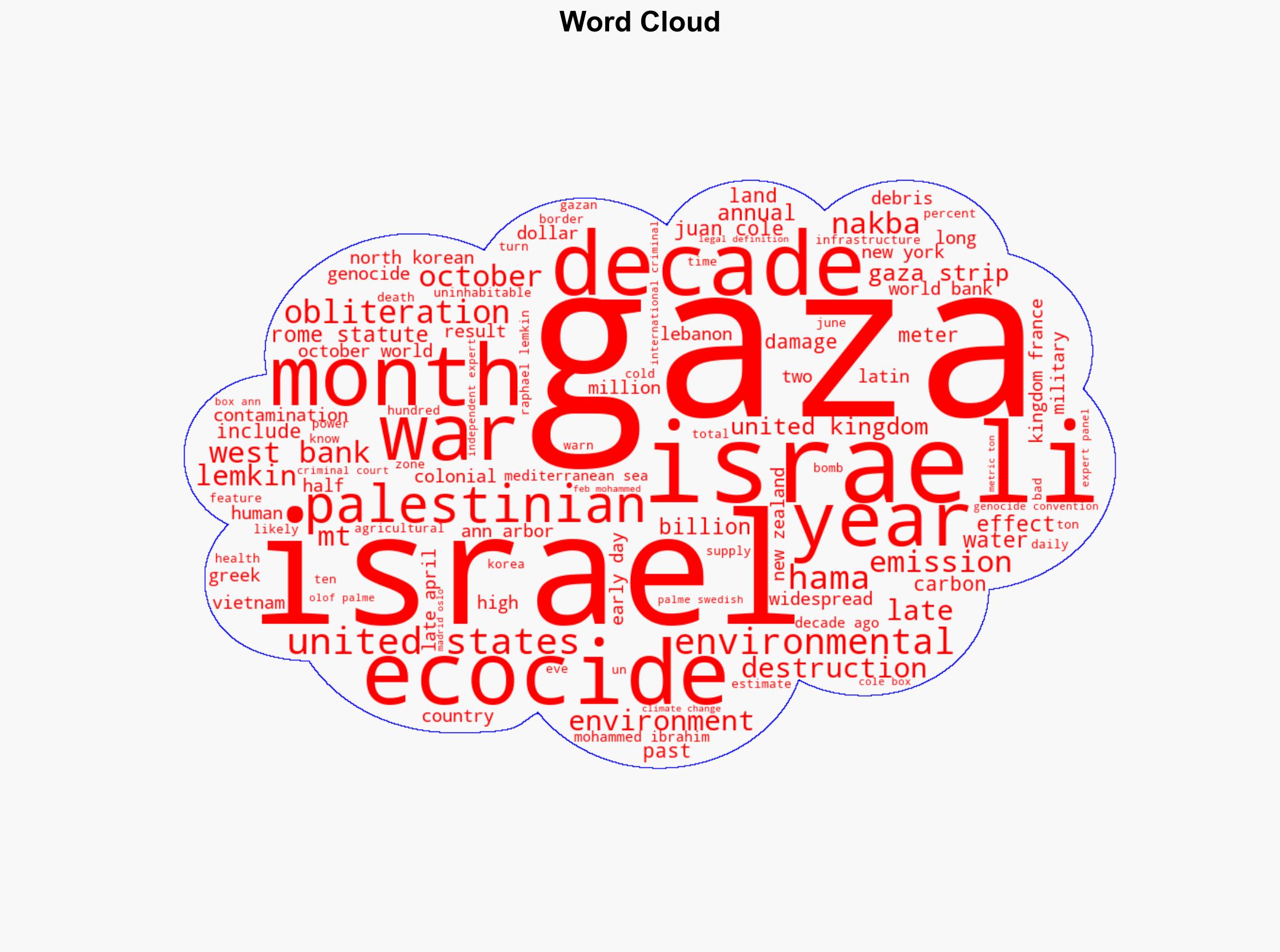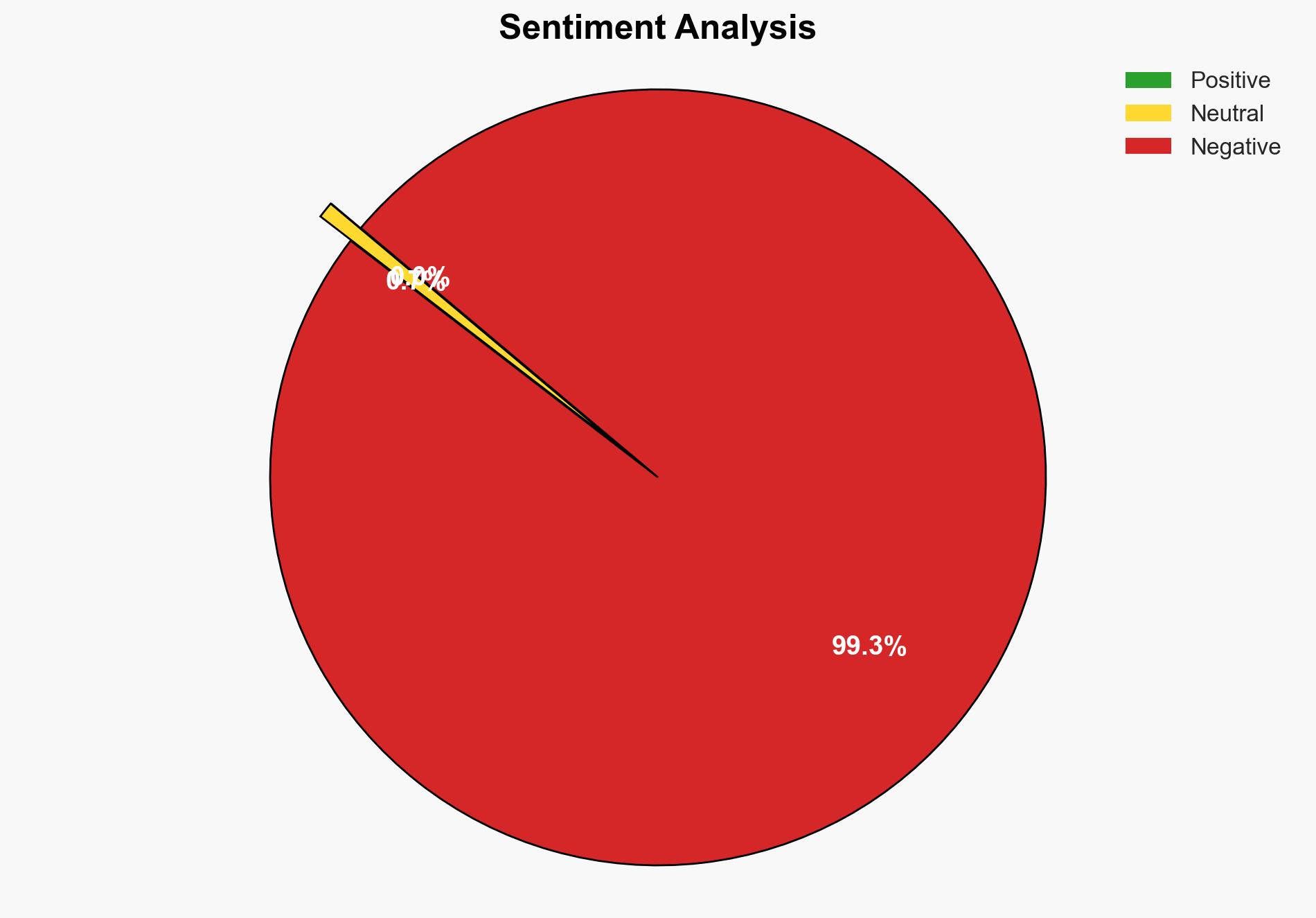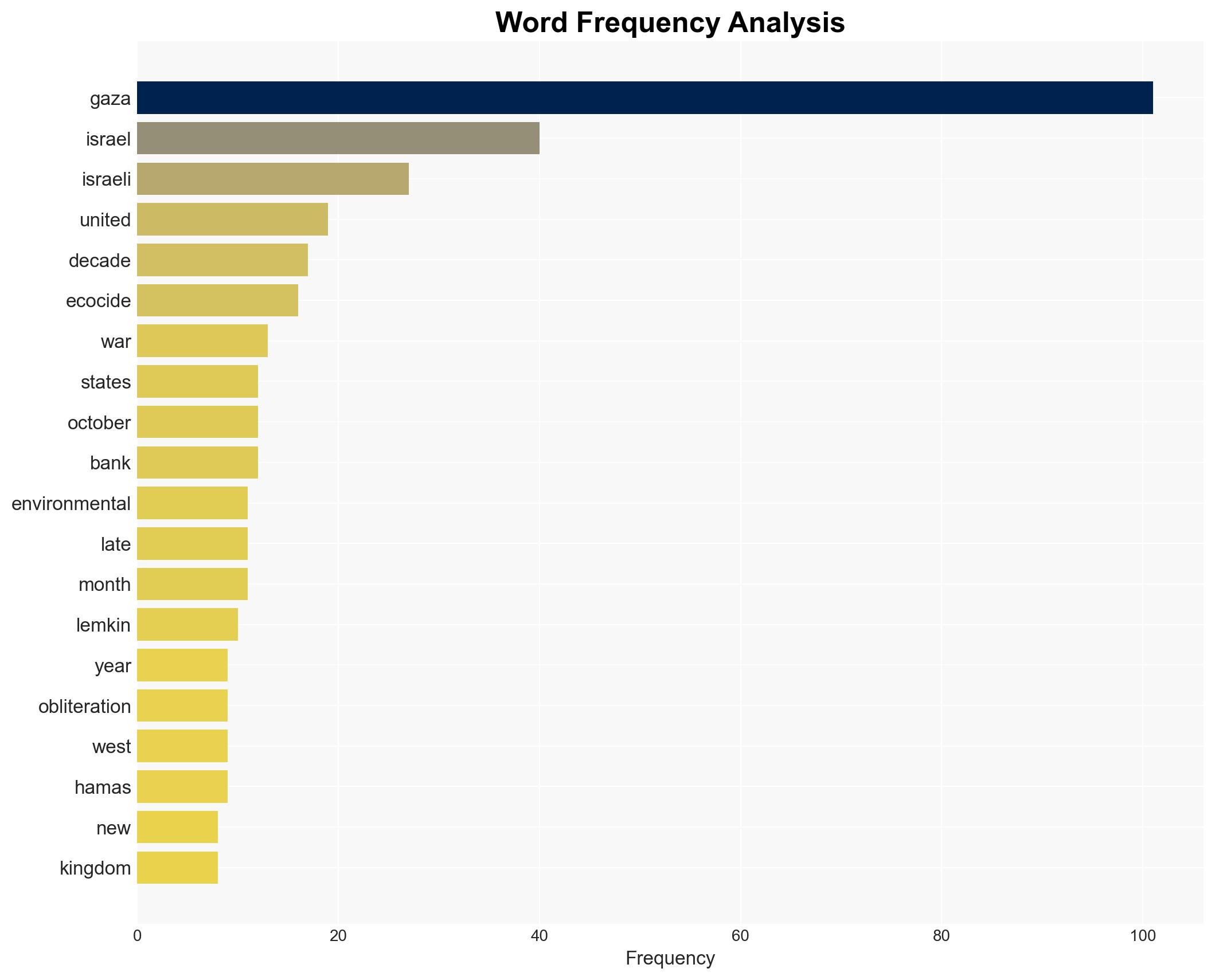The Ecocide of Gaza
Published on: 2025-11-25
AI-powered OSINT brief from verified open sources. Automated NLP signal extraction with human verification. See our Methodology and Why WorldWideWatchers.
Intelligence Report: The Ecocide of Gaza
1. BLUF (Bottom Line Up Front)
The most supported hypothesis is that the environmental degradation in Gaza is a result of deliberate military strategy by Israel, aimed at undermining the socio-economic stability of the region. Confidence Level: Moderate. Recommended action includes diplomatic engagement to address environmental and humanitarian concerns, alongside international legal scrutiny to assess potential violations of international law.
2. Competing Hypotheses
Hypothesis 1: The environmental degradation in Gaza is a deliberate strategy by Israel to undermine the socio-economic stability of the region, constituting a form of ecocide.
Hypothesis 2: The environmental damage in Gaza is primarily a consequence of ongoing conflict and not a deliberate strategy, with both sides contributing to the degradation through military actions.
Hypothesis 1 is more likely due to the documented use of tactics such as aerial herbicide spraying and bulldozing of agricultural land, which align with historical patterns of environmental warfare. However, the complexity of the conflict and lack of direct evidence of intent necessitate a moderate confidence level.
3. Key Assumptions and Red Flags
Assumptions: It is assumed that the environmental degradation is directly linked to military actions and not significantly influenced by other factors such as climate change or natural resource mismanagement by local authorities.
Red Flags: Potential bias in sources advocating for the recognition of ecocide may skew interpretations. The historical context of colonial power dynamics may also color perceptions of intent.
Deception Indicators: Lack of transparency in military operations and potential misinformation campaigns by involved parties could obscure the true extent and intent of environmental damage.
4. Implications and Strategic Risks
The continued environmental degradation in Gaza poses significant humanitarian risks, potentially exacerbating socio-economic instability and fueling further conflict. Politically, it may lead to increased international scrutiny and pressure on Israel, potentially impacting diplomatic relations. Economically, the destruction of arable land threatens food security and livelihoods, increasing dependency on external aid. Informationally, narratives around ecocide could be leveraged by various actors to influence public opinion and policy.
5. Recommendations and Outlook
- Engage in diplomatic efforts to facilitate environmental restoration and humanitarian aid in Gaza.
- Encourage international legal bodies to investigate potential violations of international law related to environmental damage.
- Best-case scenario: Successful diplomatic and legal interventions lead to environmental recovery and improved regional stability.
- Worst-case scenario: Continued degradation exacerbates humanitarian crises and escalates conflict.
- Most-likely scenario: Incremental improvements through international pressure and aid, but underlying conflict dynamics persist.
6. Key Individuals and Entities
Raphael Lemkin (historical reference), Olof Palme (historical reference), Juan Cole (source reference).
7. Thematic Tags
National Security Threats, Environmental Warfare, Humanitarian Crisis, International Law
Structured Analytic Techniques Applied
- Cognitive Bias Stress Test: Expose and correct potential biases in assessments through red-teaming and structured challenge.
- Bayesian Scenario Modeling: Use probabilistic forecasting for conflict trajectories or escalation likelihood.
- Network Influence Mapping: Map influence relationships to assess actor impact.
Explore more:
National Security Threats Briefs ·
Daily Summary ·
Support us





